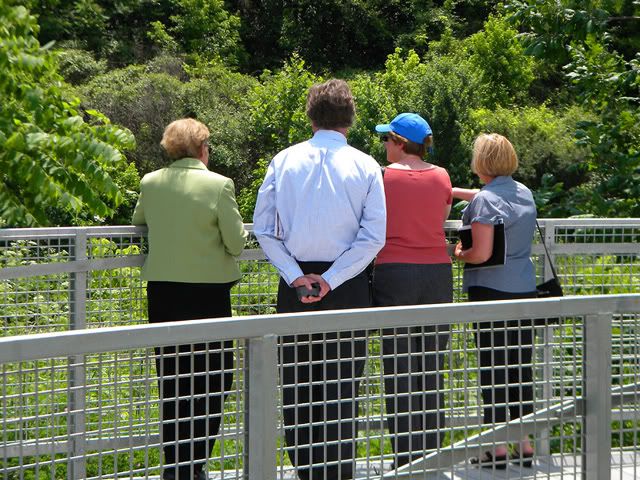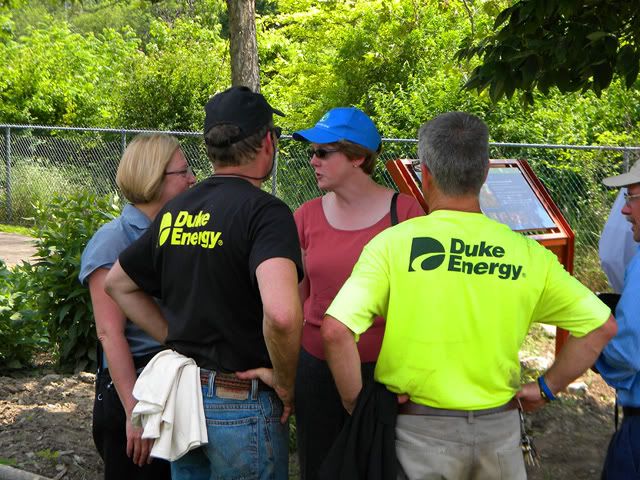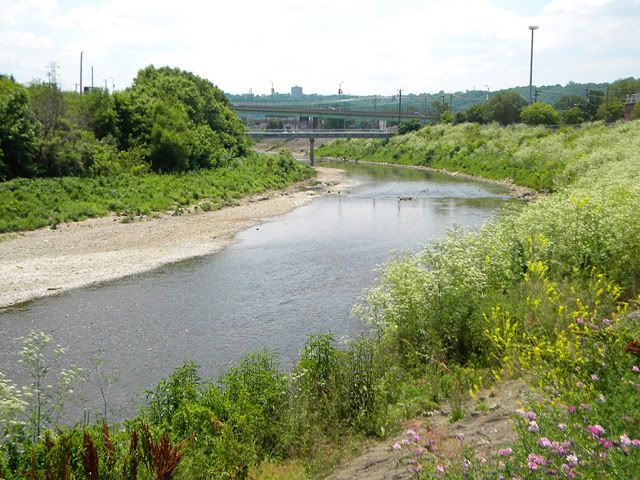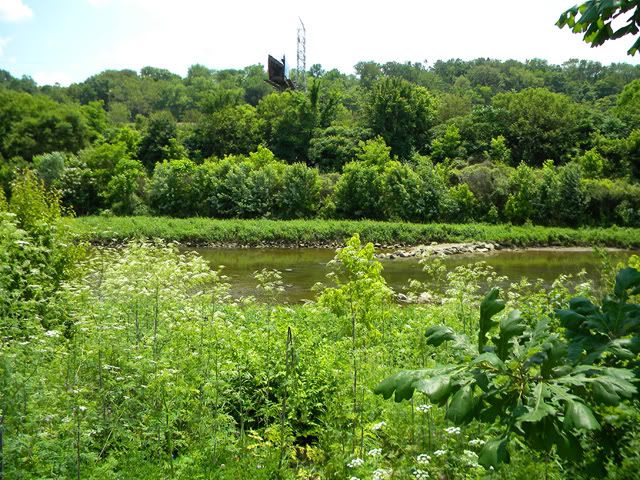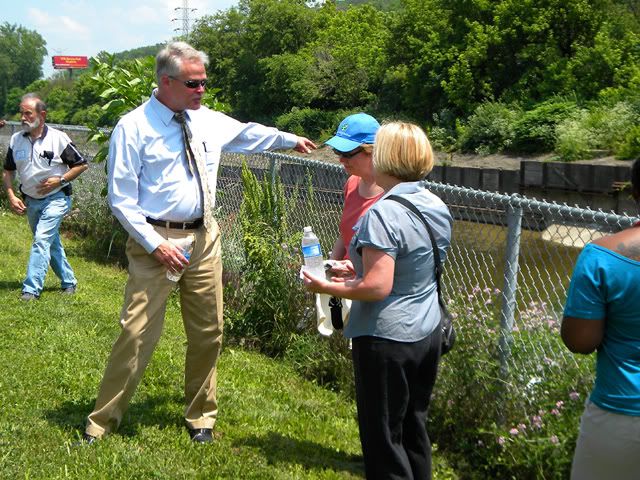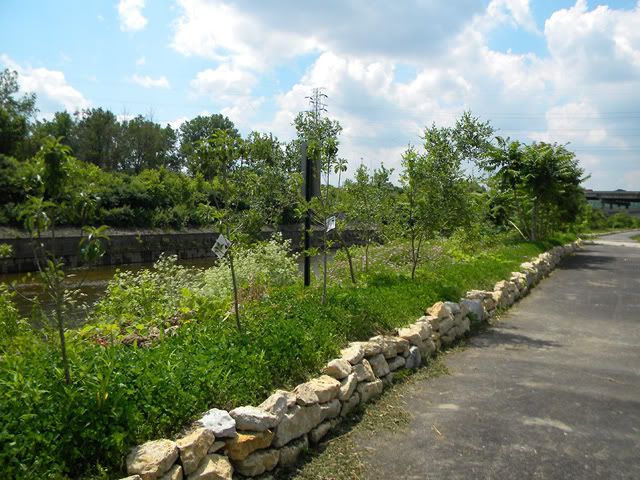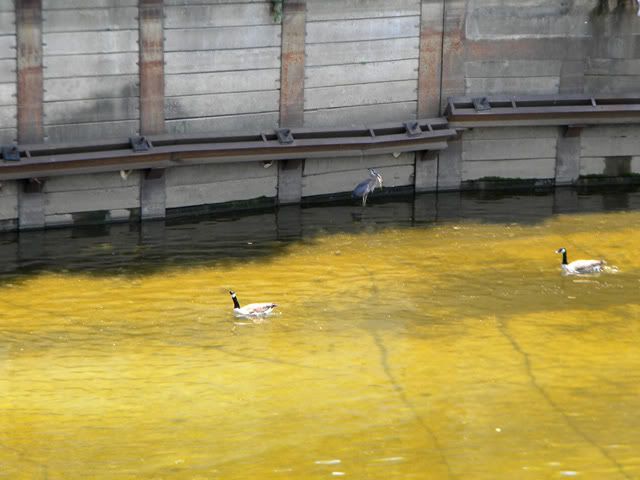The Mill Creek Restoration Project (MCRP) will receive a $50,000 Audubon Innovation Grant to delineate and recreate wetlands that have formed on sediment in the channelized sections of the urban waterway.
The grant was announced by MCRP Executive Director Robin Corathers during a tour of the Mill Creek with Nancy Stoner, acting assistant administrator with the U.S. Environmental Protection Agency's (U.S. EPA) Office of Water, highlighting the MCRP's work in to restore its degraded habitat.
Stoner was in town to learn more about MCRP, one of ten National Urban Waters Fellows under the U.S. EPA's Urban Water Initiative.
The 90-minute tour highlighted Laughing Brook, a multi-purpose constructed wetland, public art, and environmental education project at Salway Park; an edible art garden at the Salway Native Species Nursery being tended by approximately 40 volunteers from project partner Duke Energy and MCRP staff; and the Freedom Tree Grove, highlighting Mill Creek's rich cultural history as a major route along the Underground Railroad.
Still endangered
In 1997, the national group American Rivers designated Mill Creek as the most endangered urban waterway in North America, having been degraded by channelization, habitat loss, industrial runoff and more than 100 combined sewer overflows (CSO).
The non-profit MCRP, founded in 1994, cautions that CSO elimination alone will not restore the waterway. Additional measures must be taken, including regeneration the riverine-riparian ecosystem in tandem with greenway trail development; public engagement and capacity building; and healthy people, schools and neighborhoods strategies.
Since its inception, MCRP has completed more than 30 eco-regeneration and trails projects to date and provides environmental education programming to more than 26,000 students annually.
The U.S. EPA has provided funding for some of these efforts, including stormwater grants and environmental education grants that have helped fund Laughing Brook, the Freedom Tree Grove, a River Resource Economics Study, and service learning installations at local schools.
"This is the kind of thing that we're all about, so we're very happy to partner with you on this project," Stoner said.
Many of these urban waterways are located in heavily industrialized areas, meaning that many of their surrounding communities are low-income.
The key to returning these waterways to productive use involves harnessing a community's energy and intelligence capital and building partnerships, Stoner said.
"All of these communities have resources that have been degraded," she said. "We'll always have issues. But that doesn't mean that the community doesn't value urban rivers."
Engaging the public
Encouraging the community to value the resource requires improving public access.
The main initiative to improve that access is the Mill Creek Greenway and Trail, envisioned as a 28-mile multi-use trail from the creek's headwaters in Liberty Township to a planned park on the Ohio River, where it would tie into the Ohio River Trail.
A 2009 study by the University of Cincinnati Applied Economics Research Institute concluded that the City of Cincinnati's 12.5-mile portion of the trail would create an economic impact of $52.18 million and at least 445 jobs. So far, 3.5 miles, from Winton Road to the Mill Creek Road bridge, have been completed.
A festival and health fair celebrating the trail will be held next month.
"Rivers are a magnet," Stoner said.
Stoner tours rain garden
While in town, Stoner also met with representatives from the Metropolitan Sewer District of Greater Cincinnati's (MSD) to learn about its efforts to find sustainable solutions to the City's combined sewer system problem.
One of her stops was the rain garden at St. Francis Court Apartments on Queen City Avenue, created on two vacant parking lots. The rain garden will serve to retain and cleanse groundwater runoff and provide a natural habitat for birds and insects.
"MSD is proud to be included in this visit to Cincinnati by one of U.S. EPA's top officials," said MSD Director Tony Parrott in a prepared release. "We believe our programs can be a model for other communities across the country, and we are pleased to share them with policymakers at all levels."
Previous reading on BC:
MCRP makes pitch for Mill Creek trail funds (11/17/09)
Mill Creek greenway project wins $500K grant (10/12/09)
Report: Mill Creek trail could create 445 jobs, $52 million economic impact (9/8/09)
Tuesday, May 29, 2012
Federal Office of Water head gets tour of Mill Creek, solidifies partnership
Posted by
Kevin LeMaster
at
12:03 PM
![]()








